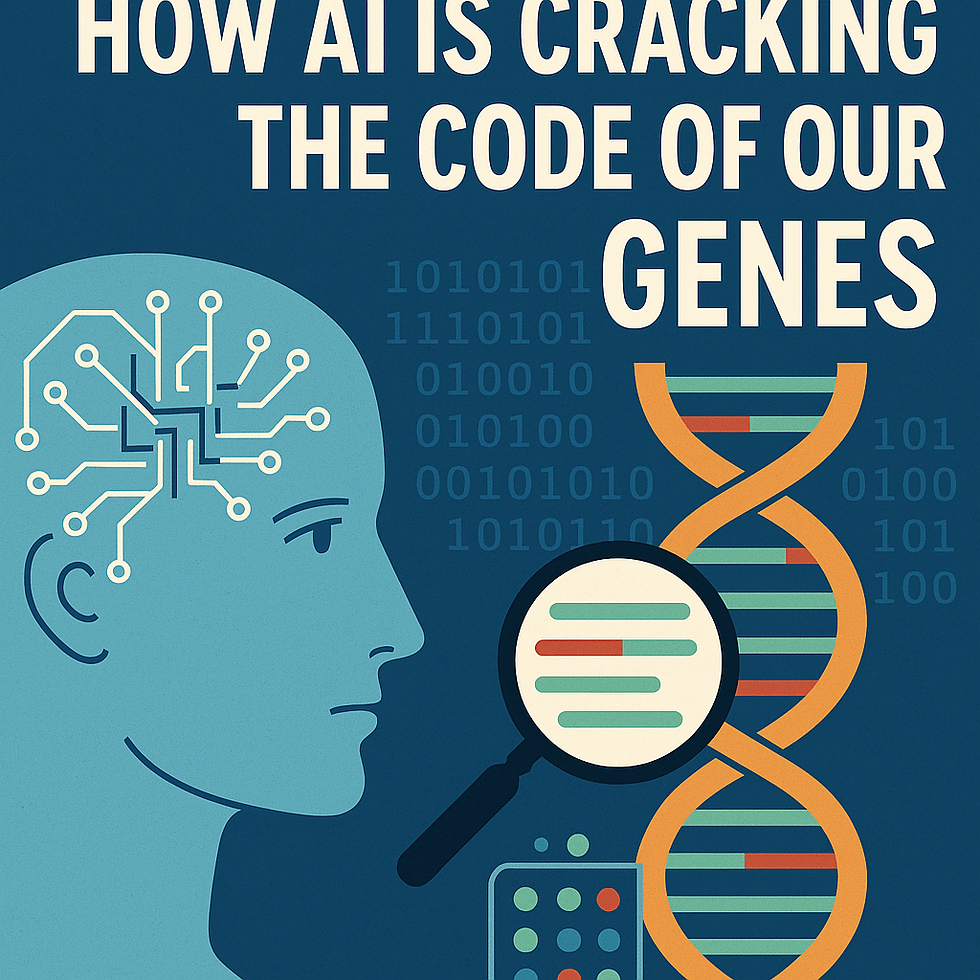How AI is Cracking the Code of Our Genes
- Tyson Valle
- Jan 17
- 2 min read

Genomics and transcriptomics are all about understanding our genetic blueprint and how genes get expressed as RNA. With modern technology, scientists can sequence entire genomes and measure RNA levels in thousands of cells at once. But that produces massive amounts of data. This is where AI steps in.
Imagine trying to spot a small typo in a billion-letter text. That’s kind of like searching for a disease-causing mutation in human DNA. Traditional tools have done a decent job, but AI-based approaches like DeepVariant now do it much more accurately. They use deep learning to read and interpret raw sequencing data, filtering out random errors to pinpoint true mutations.
AI also helps make sense of which genes are turned “on” or “off” in different tissues. In transcriptomics, you often have huge spreadsheets of gene expression levels across many samples. Machine learning models can cluster samples or cells with similar gene expression patterns. For example, in single-cell RNA-sequencing (scRNA-seq), each cell can have thousands of gene readouts. AI tools like scVI use neural networks to group these cells by type or function, revealing hidden patterns.
Another big deal is how AI helps identify important “non-coding” regions in our DNA—parts that don’t directly make proteins but can regulate when and where genes are expressed. Tools like DeepSEA or SpliceAI can predict if a DNA variant disrupts these regulatory elements, potentially causing disease. That’s crucial for figuring out which mutations really matter.
But maybe the most exciting new development is how AI can predict if a missense mutation (where one amino acid in a protein is changed) is likely to cause disease. DeepMind recently launched AlphaMissense, which classifies millions of potential mutations in the human genome. Being able to forecast which ones are harmful could revolutionize genetic diagnostics and research into rare diseases.
So, what does this mean for healthcare? In the near future, when a patient gets their genome sequenced, AI might quickly identify which variants are likely to be causing their symptoms. That can speed up diagnosis and help doctors choose the best treatments. It’s a step toward personalized medicine, where decisions are tailored to each individual’s genetic profile.
Overall, the power of AI in genomics and transcriptomics comes from its ability to handle complex, large-scale data. By recognizing subtle patterns that humans can’t easily see, AI can highlight the most important clues in our genetic code. That helps scientists not only understand the foundations of life but also develop new tests and therapies faster than ever before.




Comments